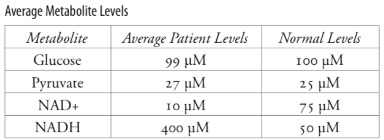Assignment:
Part I - The Symptoms
Imagine that you work at the medical examiner's office for a major metropolitan city. As Chief Medical Officer, you investigate suspicious deaths and provide toxicology services for the county. Unfortunately, it's been a busy week. In the past five days, seven people have died, all with similar symptoms. It is your job to examine the data and determine the cause of death for these victims.
The first was a tz-year-old girl. Her parents said that she was awake in the middle of the night complaining of a stuffy nose and sore throat. They gave her an extra strength Tylenol and sent her back to bed. At 7am the next morning, the parents discovered that the girl had collapsed on the bathroom floor. An ambulance rushed the girl to a nearby hospital, where she was pronounced dead.
That same day, paramedics found the second victim unconscious on his kitchen floor after what they thought was an apparent heart attack. Sadly, the victim's brother and fiancée also collapsed later that night while the family gathered to mourn his passing. Both had taken Tylenol to help them cope with their loss shortly before collapsing; neither survived.
In the next four days, four other similar deaths were reported, all in the same neighborhood and all with similar symptoms.
Are these seven deaths related? What is causing these people to die? It is your job to answer these questions before more deaths arc reported.
Symptoms exhibited by most patients:
• Dizziness
• Confusion
• Headache
• Shortness of breath/rapid breathing
• Vomiting
Most deaths were very rapid, occurring within a few hours of symptoms.
Questions:
1. Are there any similarities or connections between these seven individuals? What questions would you want to ask the families to answer these questions?
2. In your opinion, are these seven deaths connected? Why or why not?
Part II - Autopsy Report
• Immediate cause of death was hypoxia (suffocation or lack of oxygen).
• Tissue sections from heart, lung, kidney, and liver all show massive cell death.
• Staining with specific dyes showed major mitochondria' damage within the affected tissues.
• Oxygen levels in the patients' blood were approximately t to mm Hg (normal range is 75 to too mm Hg).
Questions
1. Recalling your knowledge of the function of organelles, what function of the cells was interrupted in these patients? Could this loss of function lead to the death of these individuals? Why or why not?
2. Given the data in the autopsy, were there any reports that seemed inconsistent with the immediate cause of death?
Part III - Subcellular Metabolite Analysis
Detailed analysis of the damaged cells showed that ATP levels in the mitochondria were very low. Levels of pyruvate and acetyl coenzyme A (CoA) were normal. You begin to suspect a malfunction of a specific cellular metabolic pathway and so you request a more detailed analysis of the sub-cellular components of the affected cells from the autopsy. The levels of key metabolites are reported below:

Questions
1. For each metabolite listed in the table, describe its role in cellular respiration? Are they substrates or products? What is their main function?
2. Are there any abnormalities in the levels of these metabolites in the victims? Develop a hypothesis about which pathway may be affected based on these abnormalities.
3. Explain your reasoning for your hypothesis.
Part IV - Role of Cyanide
You are now convinced that you know the cause of death for these victims and quickly report it back to the police as this is a very dangerous situation. After realizing that the electron transport chain was no longer functioning, you started to suspect poisoning and ran a blood test for various poisons that you knew affected the electron transport chain. The test of all seven patients came back positive for cyanide. Cyanide irreversibly binds to crochrome c oxidase (CcOX) of the electron transport chain and prevents the transfer of electrons to oxygen, the final electron acceptor.
Questions
1. What affect would cyanide have on the electron transport chain and the production of ALP? Explain your answer.
2. Given what you now know about the action of cyanide on cellular respiration, explain why the patients died of lack of oxygen while their blood oxygen levels were normal?
3. Would artificial respiration or oxygenation have saved these people? Why or why not?
4. Looking back at the information you have about the people before they got sick, can you suggest a possible source of the cyanide poisoning? How should public health officials and police respond to this tragedy?
References
Baines, A.T., McVey, M., Rybarczyk, B., et al. 2004. Mystery of the toxic flea dip: An interactive approach to teaching aerobic cellular respiration. Cell Bid Edu 3: 62-68.
Beck, M., Monroe, S., Prout, L. et al. October 11, 1982. TheTylenol Scare. Newsweek.
Bell, R. The Tylenol Terrorist. Tru Crime Library, Last accessed: Sep 29 2010.
Campbell, NA, Reece, J.B., Taylor, M.R. et al. 2006. Biology Concepts and Connections, 5th edition. Pearson Education Inc.
Jones, M., Bickar, D., Wilson, M. T., Brunori, M., Colosimo, A., and Sarti, P. 1984. A re-examination of the reactions of cyanide with cytochrome c oxidase. Biochem. J. zzo: 57-66.
Leavesley, H.B., Krishnan, L.L., Prabhakaran, K. et al. 2°08. Interaction of cycanide and nitric oxide with cytochrome c oxidase: Implications for acute cyanide toxicity. Toxicological Sciences 1o1(1): 101-111.
Tlift, Susan. October 11,1982. Poison Madness in the Midwest. Time.